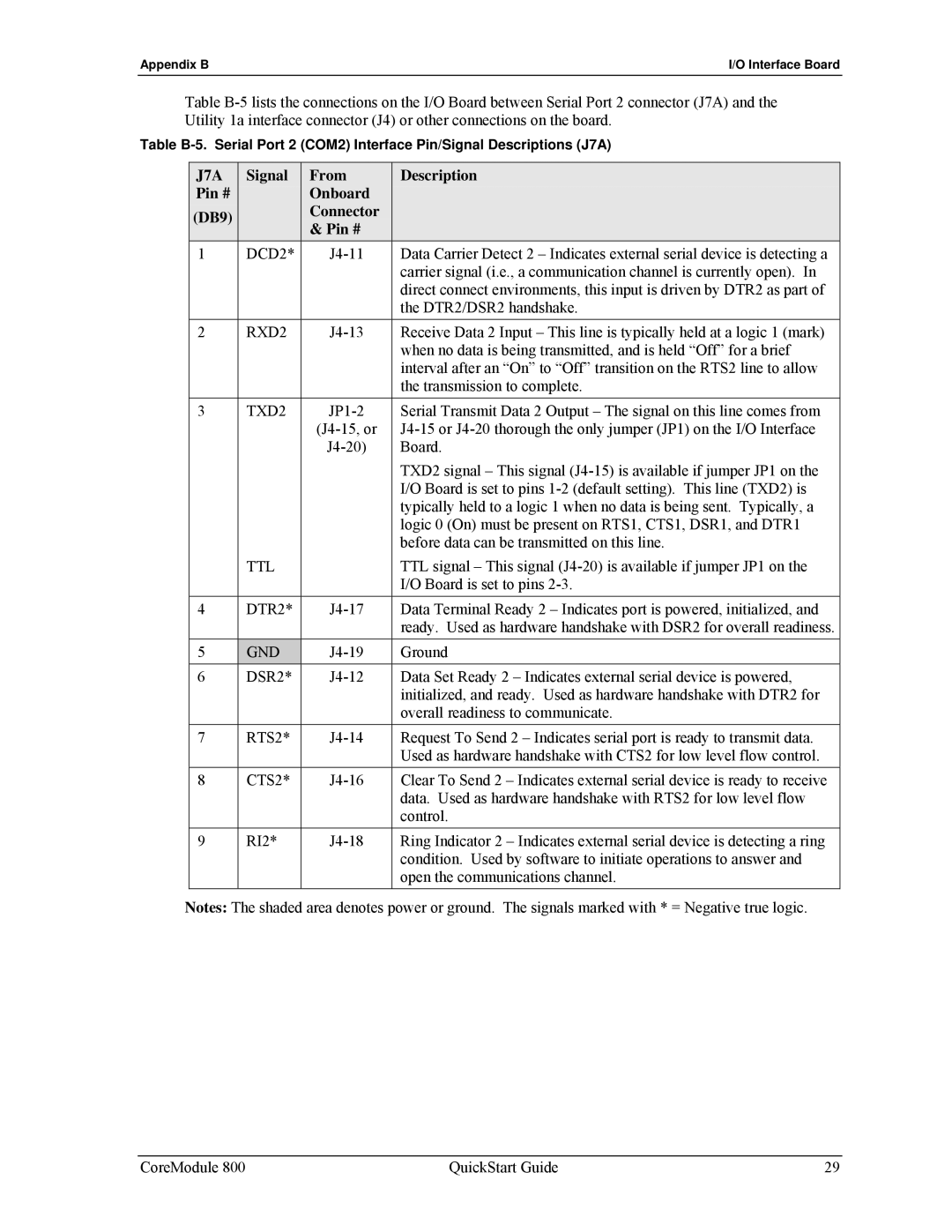Appendix B | I/O Interface Board |
Table
Table
J7A | Signal | From | Description |
Pin # |
| Onboard |
|
(DB9) |
| Connector |
|
| & Pin # |
| |
|
|
| |
1 | DCD2* | Data Carrier Detect 2 – Indicates external serial device is detecting a | |
|
|
| carrier signal (i.e., a communication channel is currently open). In |
|
|
| direct connect environments, this input is driven by DTR2 as part of |
|
|
| the DTR2/DSR2 handshake. |
2 | RXD2 | Receive Data 2 Input – This line is typically held at a logic 1 (mark) | |
|
|
| when no data is being transmitted, and is held “Off” for a brief |
|
|
| interval after an “On” to “Off” transition on the RTS2 line to allow |
|
|
| the transmission to complete. |
3 | TXD2 | Serial Transmit Data 2 Output – The signal on this line comes from | |
|
| ||
|
| Board. | |
|
|
| TXD2 signal – This signal |
|
|
| I/O Board is set to pins |
|
|
| typically held to a logic 1 when no data is being sent. Typically, a |
|
|
| logic 0 (On) must be present on RTS1, CTS1, DSR1, and DTR1 |
|
|
| before data can be transmitted on this line. |
| TTL |
| TTL signal – This signal |
|
|
| I/O Board is set to pins |
4 | DTR2* | Data Terminal Ready 2 – Indicates port is powered, initialized, and | |
|
|
| ready. Used as hardware handshake with DSR2 for overall readiness. |
5 | GND | Ground | |
6 | DSR2* | Data Set Ready 2 – Indicates external serial device is powered, | |
|
|
| initialized, and ready. Used as hardware handshake with DTR2 for |
|
|
| overall readiness to communicate. |
7 | RTS2* | Request To Send 2 – Indicates serial port is ready to transmit data. | |
|
|
| Used as hardware handshake with CTS2 for low level flow control. |
8 | CTS2* | Clear To Send 2 – Indicates external serial device is ready to receive | |
|
|
| data. Used as hardware handshake with RTS2 for low level flow |
|
|
| control. |
9 | RI2* | Ring Indicator 2 – Indicates external serial device is detecting a ring | |
|
|
| condition. Used by software to initiate operations to answer and |
|
|
| open the communications channel. |
Notes: The shaded area denotes power or ground. The signals marked with * = Negative true logic.
CoreModule 800 | QuickStart Guide | 29 |
